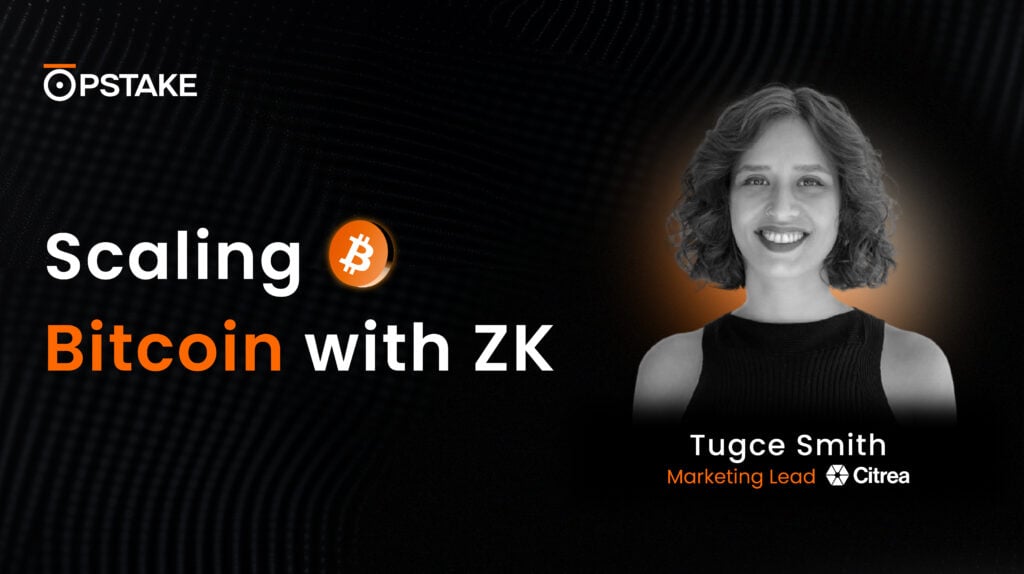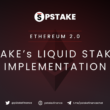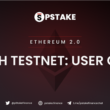pSTAKE’s liquid-staked assets allow users to leverage their native tokens to participate in additional DeFi opportunities across its ecosystem. pSTAKE already supports the native $ATOM token on our platform, and holders can now benefit more broadly from the effects of $ATOM liquid staking.
The entire process begins by staking $ATOM through pSTAKE to mint stkATOM – from there, the opportunities are endless. Users can leverage their stkATOM to earn rewards or convert them into $bATOM (the representative token of $ATOM on the Terra blockchain), via the Wormhole bridge to continue exploring DeFi strategies.
In this article, we’re covering all of the available DeFi opportunities for $ATOM holders within the pSTAKE and Terra ecosystems so you can explore all possible options to earn and thrive.
stkATOM DeFi Strategies
pSTAKE
pSTAKE users can stake their $ATOM tokens on our platform and receive stkATOM in return – for those who are unfamiliar, stkATOM is the liquid representative token of staked $ATOM only available via pSTAKE.
Once successfully converted, you can use your stkATOM tokens to pursue other yield-generating opportunities in DeFi. Simply holding stkATOM allows you to earn 12% staking rewards on your native $ATOM.
*Please note that stkATOM staking rewards only add to your $ATOM balance – your staked stkATOM balance will remain the same.
SushiSwap
Outside of the pSTAKE platform, users can leverage their tokens by depositing them within the stkATOM/ETH liquidity pool on the SushiSwap DEX (decentralized exchange). In return for providing liquidity, users can earn 12% in staking rewards and 9% in external incentives on stkATOM.
This is just one example of how stkASSETs can be utilized outside of the pSTAKE ecosystem on the Ethereum network, with much more to come in the pipeline.
$bATOM & $UST: Entering the Terra Ecosystem
pSTAKE has now successfully expanded $ATOM DeFi onto the Terra blockchain, currently amassing over $22.19 billion in TVL (Total Value Locked) at the time of writing. This undoubtedly boosts utility for $ATOM holders across the board and allows them to tap into a variety of new opportunities across its dApp (decentralized application) product line.
$bATOM Integration & Anchor Protocol
Just last month, $bATOM was integrated on Anchor Protocol to be used as collateral to borrow $UST, Terra’s largest and most popular dollar-pegged stablecoin. This means users can now convert their stkATOM to $bATOM through pSTAKE, then collateralize $bATOM to receive $UST as a loan on Anchor Protocol.
This marked a major milestone for pSTAKE and presented the first decentralized use case for borrowing against $ATOM & staked $ATOM. Subsequently, users can deposit their $UST for aUST (essentially a claim on $UST) on Anchor Protocol to earn ~20% yield via staking directly on Anchor Protocol.
Furthermore, acquiring $UST via $bATOM is the very first stepping stone to diving deeper into the Terra ecosystem in order to fully leverage even more DeFi opportunities that exist on its network.
Anchor Protocol Liquidity Pool
In the governance section of the Anchor Protocol app, users can provide liquidity within the $ANC/$UST pool in equal amounts of each token.
Currently, the APR is just over 30%, providing one of the highest yields available for earning on your $UST, while also giving you exposure to the $ANC native governance token to help contribute to and run the overall protocol network.
Mirror Protocol
Mirror Protocol is a decentralized synthetic assets protocol built on the Terra blockchain where users can trade, borrow, and farm “mAssets,” or the underlying synthetic representations of popular real-world assets, such Apple and Tesla stocks.
Users can deposit their $UST or aUST as collateral in order to mint or create these mAssets in the form of a loan, providing yet another avenue to acquire additional capital. If, for example, the value of the mAsset increases above the value of your collateral (where the percentage relative to the mAsset can be set by the user and may vary), then the users’ position (collateral) will be liquidated.
In addition to collateralization, users can participate in short and long farming on Mirror Protocol to provide liquidity in more lucrative ways.
Long farming is where users can provide liquidity to receive LP (liquidity provider) tokens, which can then be staked to earn rewards in MIR, Mirror’s governance token. To long farm, users need to provide an equivalent amount of liquidity to the pool, denominated in the mAsset and $UST.
Short farming is where minted mAssets are instantly sold, where any generated profit is locked within the protocol for a 2-week period and used to rebuy the mAssets. The process is generally simpler than long farming, where users use $UST or aUST and select the amount they want to collateralize, collateral ratio, and value of the respective mAsset they want to short (this process can only be executed during regular market hours).
Once the short position has been created, users can earn rewards in the form of MIR.
Liquidity Providing on Astroport
Astroport is a decentralized, permissionless, and open-source DEX protocol built on the Terra blockchain. Liquidity providers participating in pools on the DEX receive Liquidity Provider (LP) tokens and share in the trading fees. Additionally, users can be granted additional $ASTRO (the protocol’s native token), depending on the type of pool.
The dual liquidity mining feature allows LPs to deposit their tokens in ASTRO Generators, which forward them into third-party staking contracts. As a result, LPs can claim dual governance token rewards (both $ASTRO and tokens coming from other communities. e.g. $ANC, $MIR).
Liquidity can be provided in a variety of Terra ecosystem tokens, such as $UST, $LUNA, $ANC, and more.
Pylon Protocol
Pylon Protocol is a dApp running on the Terra blockchain made up of a suite of DeFi savings and payments products that builds upon many of the network’s yield-generating products. The protocol ensures ecosystem participants (users and creators) are satisfied through long-term value exchanges through user deposits and paying out consistent, stable yields. $MINE is the native utility and governance token that helps power the underlying network.
Users can leverage their $UST tokens in various ways to benefit from Pylon’s DeFi offerings. One method is to provide liquidity to its $MINE/$UST pool by depositing an equal amount of both tokens, currently earning rewards of up to 60% APY in $MINE-$UST LP tokens.
Furthermore, these LP tokens can be staked directly on the Pylon platform in order to earn additional rewards, offering more incentives to contribute to and power the overall network.
Next is Pylon Gateway, a decentralized project crowdfunding and early-stage token farming launchpad where investors can contribute to projects at their very early stages by providing capital. This is facilitated by $UST holders staking their assets to receive launchpad project tokens as a reward – the teams of these projects receive revenue in the form of yield derived from the initial deposits of investors.
Mars Protocol
Mars Protocol is an autonomous credit protocol built on Terra that allows users to lend, borrow, and earn – these are made possible via 2 types of borrowing.
The first is Contract-to-Borrower (C2B), where users can borrow funds in a non-custodial manner by overcollateralizing their assets – this is a standard practice alongside other protocols on the market. On Mars Protocol, users can deposit their $UST, $LUNA, or $ANC tokens to utilize in order to borrow against the same set of assets, where a maximum of 75% of the deposited collateral can be borrowed.
The second is Contract-to-Contract borrowing (C2C), which is inherently unique to Mars Protocol – this is because it allows users to leverage their LP or contract tokens as collateral so the initially deposited collateral is liquid for use in other DeFi areas. As an example, users can take their LP tokens from TerraSwap (that were acquired using borrowing $UST, $LUNA, mAssets, etc.) and use them as collateral on Mars Protocol.
Additionally, the protocol will be able to allow leveraged LPs to operate by using borrowed funds. This would enable users to participate in yield-farming opportunities by depositing Terra ecosystem assets (i.e. $UST & $LUNA) and, in return, receive $MARS tokens as a reward.
Osmosis Liquidity Mining
$UST holders have the ability to participate in liquidity mining on the Osmosis DEX, a decentralized P2P (peer-to-peer) blockchain where users can engage in DeFi through IBC-enabled assets.
These opportunities are available within the Osmosis liquidity pools, which allow you to earn high yields on your deposited assets.
Users can leverage their borrowed $UST from collateralizing their $bATOM and provide liquidity to a variety of pools, including:
- $XPRT/$UST (~200% APR)
- $LUNA/$UST (~40% APR)
- $CMDX/$UST (~25% APR)
Liquidity mining rewards are denominated in $OSMO, the native governance token on Osmosis.
What’s your $ATOM DeFi Strategy?
With such a wide array of options for $ATOM holders on pSTAKE to choose from, the benefits of liquid staking become far more apparent and enticing. Branching out into the Terra ecosystem demonstrates our commitment to extending our liquid staking solutions into other DeFi realms, providing continuous value-adds for users to make the most out of their stkASSETs.
This is only the beginning of what we have planned this year and beyond, as we’re continuing to build upon the very foundation that will bring our liquid staking economy to the masses.
So what’s your $ATOM DeFi strategy? Start by converting your $ATOM to stkATOM and dive deeper into the plethora of possibilities in both the pSTAKE and Terra ecosystems.
About pSTAKE
pSTAKE is a liquid staking protocol that unlocks liquidity for your staked assets. With pSTAKE, you can securely stake your Proof-of-Stake (PoS) assets, participate in protocol improvements and security to earn staking rewards, and receive staked underlying representative tokens (stkASSETs) which can be used to explore additional yield opportunities across DeFi.
At present, pSTAKE supports Binance Chain (BNB), Cosmos (ATOM), Persistence (XPRT), and Ethereum (ETH) networks’ native tokens, with a view to support more chains and assets in the future (SOL, and AVAX).
Developed by Persistence
Persistence is a Tendermint-based, specialised Layer-1 network powering an ecosystem of DeFi applications focused on unlocking the liquidity of staked assets. Persistence facilitates the issuance and deployment of liquid-staked stkASSETs, allowing users to earn staking rewards while participating in DeFi primitives, such as lending/borrowing and liquidity provisioning on DEXs.
Persistence aims to offer a seamless staking and DeFi experience for PoS (Proof-of-Stake) users and enable developers to build innovative applications around stkASSETs.
Join Our Movement
Twitter | LinkedIn | Telegram | YouTube | Reddit | [email protected]










